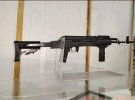The other thing I noticed is the slightly premature addition of the Su-35s, but also the omitting of the close to 50 L-59Es.
Lol before I even read this part,I was going to ask "Why do you guys only have one L-59 according to Wikipedia?"
What's the deal with the L-59s? If I remember correctly,they were Czechoslovakian. And they're classic trainers and light attack aircraft!
Indeed. I wouldn't be surprised if they ordered more of them later, like they did with the Rafale. And speaking of the Rafale, the Typhoon surprisingly excelled in many aspects over the Rafale which really surprised me. But one of the greatest strengths of the Rafale is its payload and SPECTRA along with its data fusion.
This way,you could retire some Mig-29s or Mirage 2000s in the future.
I'm very surprised about that. Although I did read a few years ago they were having issues with it, but I figured they were going to take care of them and everything would be fine. But this has turned out to be a major problem, if almost all operators are having issues with them and now the Norwegians are returning them for a full refund...that's crazy!
How many of them does the Hellenic Navy operate?
The Navy doesn't use them,the Army uses them. We have 20,but some of them don't fly.
Check this out:
Finland
In January 2015, it was reported that Finnish NH90s had been experiencing considerable reliability issues, at one time in 2014 fleet availability dipped to 19%, and some spare parts had up to seven months waiting time.
[73] By early 2015, the combined NH90s fleet had accumulated a total of 7,000 flight hours, and had an availability rate of 40%.
[74] On 18 June 2015, delivery of the final Finnish NH90 took place.
[75] In November 2015, the availability rate was reported as having surpassed 50 percent.
[76] All helicopters were in Final Operational Configuration (FOC) in 2018, 17 years after order.
Australia
In July 2014, the
Australian National Audit Office released a report on the MRH90, citing a series of procurement errors and development deficiencies delaying final operational capability (FOC), originally planned for that month, until April 2019, nearly five years later than planned. Some nine years after the initial contract was signed, the models first delivered in 2007 had not validated any of the 11 set operational capability milestones, and forced redesigns including bolstered cabin floors and windscreens, rappelling hooks, and door gunner positions; obtaining spare parts and sustaining the helicopters has also been more costly. The Australian Army will be forced to operate its aging S-70A Black Hawk beyond their planned retirement date.
[47] Due to the delays, Australia will receive an additional helicopter, for a total of 47.
[48] By September 2015, most of the MRH90's flaws had reportedly been addressed.
[49] In June 2017, the Australian Navy successfully completed trials aboard
HMAS Anzac, marking a major milestone in the helicopter programme.
[50]
In 2015, the Australian Army decided to delay retiring 20 Black Hawks by 4 years until the end of 2021 in order to develop a
special operations capable MRH90.
[51][52] This required developing a Fast Roping and Rappelling Extraction System (FRRES) and a gun mount for the cabin door.
[51][52] The Taipan Gun Mount can fit either a
M134D minigun or
MAG 58 machine gun and when not in use can be moved into a outward stowed position to provide clearance to enable fast roping and rappelling.
[53][54] In February 2019, the first two of 12 MRH90 helicopters were delivered to the
6th Aviation Regiment.
[55][52] On 24 June 2021, all Australian NH-90s were temporarily grounded due to lack of maintenance and spare parts which have to be shipped from Europe to Australia.
[56] On 9 December 2021, Australia decided to phase out and replace its entire fleet of MRH90 helicopters in favour of new built Black Hawks and Seahawks from the United States.
[57]
Belgium
In June 2020, The Strategic Defence Review (STAR) of Belgium planned to phase out the 4 TTH helicopters by 2024 due to their high operating costs and low availability. They are planned to be replaced, along with the last Agusta 109, by 15 Airbus H145M helicopters. The 4 NFH variants are to remain operational and be provided with currently lacking sensors & weapons for ASW.
[65] In a Strategic review published by the Belgian Ministry of Defense in januari 2022, the plans were confirmed as availability and serviceability of the NH90 remained a key concern and the TTH will be phased out, the remaining NFH's will be provided with currently lacking sensors and armament
[66]
Greece
In August 2003,
Greece ordered 20 NH90s with an option for 14 more.
[104] In early 2013, the German newspaper
Bild alleged that Airbus officials paid
€ 41 million in bribes to Greek officials to secure the order; Airbus stated that the claim was "groundless".
[105] On December 12 it was stated that deliveries would start again after an embargo by the Hellenic Government, with 4 helicopters being of the SPECOPS specification.
By early 2017, 12 NH90s had been delivered and are in service, with eight aircraft to be delivered from the manufacturer.
[106][107]
Netherlands
In June 2014, the Dutch government decided not to accept the last batch of 7 NH90s due to some 100 shortcomings found in relation to the design, manufacturing and material choice of the aircraft, in particular corrosion in the presence of salt water.
[120][121] In December 2014, NH90 deliveries restarted after the Dutch government came to an agreement with the manufacturer, under which modifications and necessary repairs against corrosion would be made at the manufacturer's cost; 75 of the 100 shortcomings were also reported as having been solved.
[26][122]








